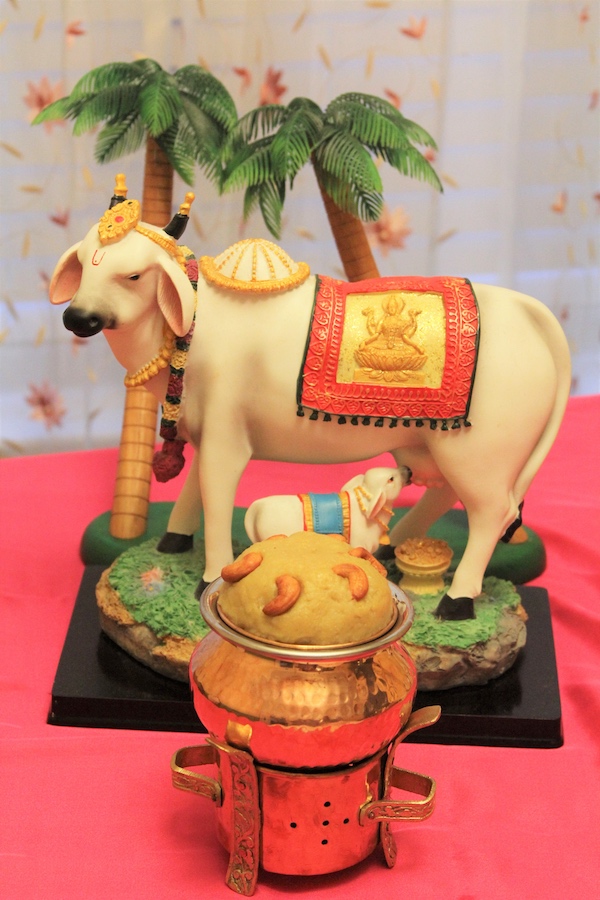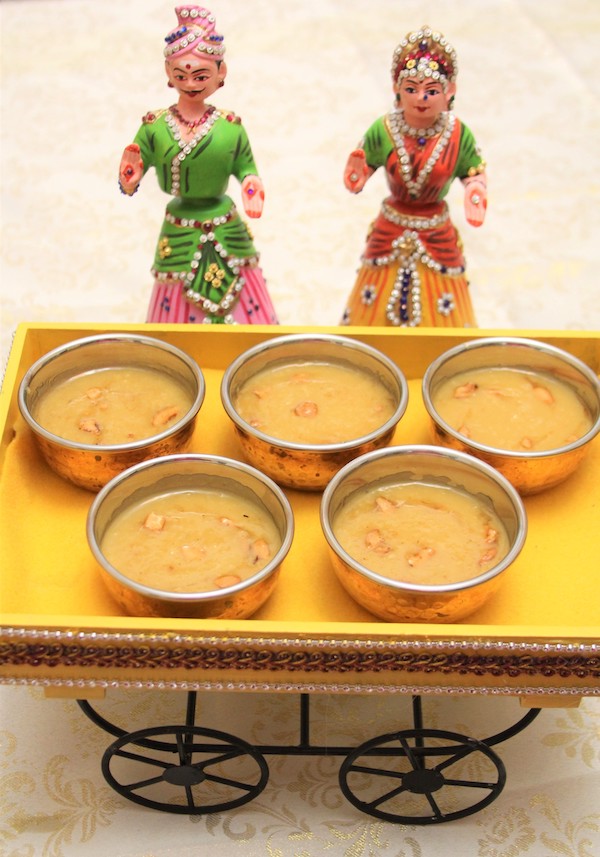A Bowl of Joy: Everything You Always Wanted to Know About Pongal, the Harvest Festival of South India
- The word Pongal is derived from the Tamil word meaning “boiling over” or “overflow.”

I was born in India and was able to enjoy different festivals throughout the year. My early childhood was spent in the rich soil of Thanjavur (formerly called Tanjore), in Tamil Nadu, India. Though I was born and raised there, I spent most of my time in Chennai until I left for college. The only way I was able to keep myself connected with my native land was through childhood stories and celebrating Pongal in the traditional way that my parents told me while growing up.
Pongal is one of the most popular harvest festivals of South India and specifically the Thanjavur region, which is known as “The Rice Bowl of Tamil Nadu” due to its rich paddy fields, coconut grooves, and dependence on agriculture. The word Pongal is derived from the Tamil word meaning “boiling over” or “overflow.” According to the Gregorian calendar, Pongal is celebrated between the 14th to 16th January of every year. It is a four-day festival.
In agriculture, farmers play a major role in harvesting their crops. Therefore, cultivating their land depends on major factors such as timely rain, sunshine, and cattle. Bhogi, the first day of Pongal, is celebrated to honor Lord Indra, “the God of Rain,” and worship him for a good harvest every year in hopes that he will provide timely rain. People clean their houses and discard old clothes and unwanted household things into a bonfire, symbolizing the end of old belongings and the beginning of the new.

Thai Pongal, also known as Surya Pongal, is the second day of the Pongal celebration. People wake up early in the morning, take an oil bath, wear traditional new clothes, and then worship the Sun God in hopes of helping farmers to get a better yield of crops each year. Pongal is usually made in 2 versions: sweet or savory. The most significant part of this day occurs when the sweet version, called “Sakkarai (sugar in Tamil) Pongal,” is made. It is traditionally prepared by boiling milk in a clay pot, and when it starts to bubble, freshly harvested rice and jaggery (brown sugar) are added and allowed to overflow. When this occurs, it is the moment when people shout out with joy “Pongalo Pongal,” which translates to “may this rice boil over” in the Tamil language and symbolizes abundance and prosperity in the year ahead.
The savory version is known as “Ven Pongal” (or Khara Pongal or Ghee Pongal). It is made with rice and lentils. Another significant feature of Surya Pongal is the “Kolam,” which is when decorative floral or geometric patterns are drawn using colored rice flour at the entrance of houses.
The third day of Pongal is known as “Mattu Pongal.” The word “mattu” in Tamil translates to “the bull” and thus this day is a celebration of cattle, particularly bulls and cows Bulls are honored during this day as they are essential for herding, and cows provide milk and other dairy products. They are embellished with kumkum, turmeric, bells, flowers and anklets, and their horns are painted and decorated with bells. The sound of the bell and the music played during this event ensure that the atmosphere is vibrant and joyful. Jallikattu or Manju Virattu (“bull chasing” in Tamil) is a bull-taming sport conducted on this day and is observed with great expectation and interest in the villages where it is played.

Kaanum Pongal is the last day of the harvest festival. The word “kaanum” means to visit in Tamil. It is the day for people to relax, socialize, and visit places such as parks, zoos, theatres, beaches, wildlife sanctuaries, and other tourist destinations. Though I moved to the United States several years ago, I continue to celebrate the Pongal festival in a traditional way with my family every year. Apart from preparing the two versions of the Pongal (sweet/savory), I also prepare pasi paruppu (moong dal) payasam, masala (channa dal) vada, and pongal kuzhambu, which is specifically made using a variety of country vegetables to honor and thank nature.
I think it is the responsibility of parents to play a key role in educating their children about their culture and traditions. Especially for children born and raised in a foreign country, it is even more important to get them involved with their own cultural activities such as art, music, dance, language, food, and festivals and help them to stay connected with their family traditions and rituals, while also providing them with opportunities to get a better sense of identity and belonging.
In conclusion, here’s a quick and easy recipe for Vaazhai Pazha Paniyaram (Banana Fritters), a South Indian sweet that can be prepared with a few basic ingredients found in any kitchen. Learn to make this tasty sweet by following the recipe below. Enjoy!!
Vaazhi Pazha Paniyaram (Banana Fritters)
Ingredients
• Banana, ripened – 3
• Wheat flour/all-purpose flour – 1 cup
• Granulated sugar/brown sugar – 1/3 cup
• Cardamom powder – ¼ tsp
• Salt – a pinch
• Oil (for deep frying )
• Chopped cashews (optional)
Instructions
- Peel bananas (3) and cut them into pieces.
- Mash them with the help of fork to make them completely mushy.
- Add 1/3 cup granulated sugar and mix it with the mashed bananas.
- Then add 1 cup all-purpose flour, ¼ tsp cardamom powder, and a pinch of salt.
- Make sure the batter is completely mixed well.
- Add 1-2 tbsp of water (if needed) to make sure you get a thick consistency of a cake batter. If your batter becomes too thin, add some all-purpose flour to make the batter thick.
- Take a small spoonful of batter and drop it gently one by one to fry the paniyaram in hot oil. Add only 4-5 paniyaram at a time while frying in hot.
- Make sure you fry the paniyaram in low to medium flame because they will get burnt/undercooked on high flame. Also make sure you slowly flip them while frying so that both sides get cooked evenly and turn golden brown.
- Transfer the paniyaram on to a plate lined with a paper towel to absorb oil.
- The vaazhai pazha paniyaram taste best when served hot!
Jayashree Krishnan is an educator and founder of the custom bakery “Jay’s Creations” based in Dallas, Texas. She has written recipes on Indian desserts in magazines published in the United States.


